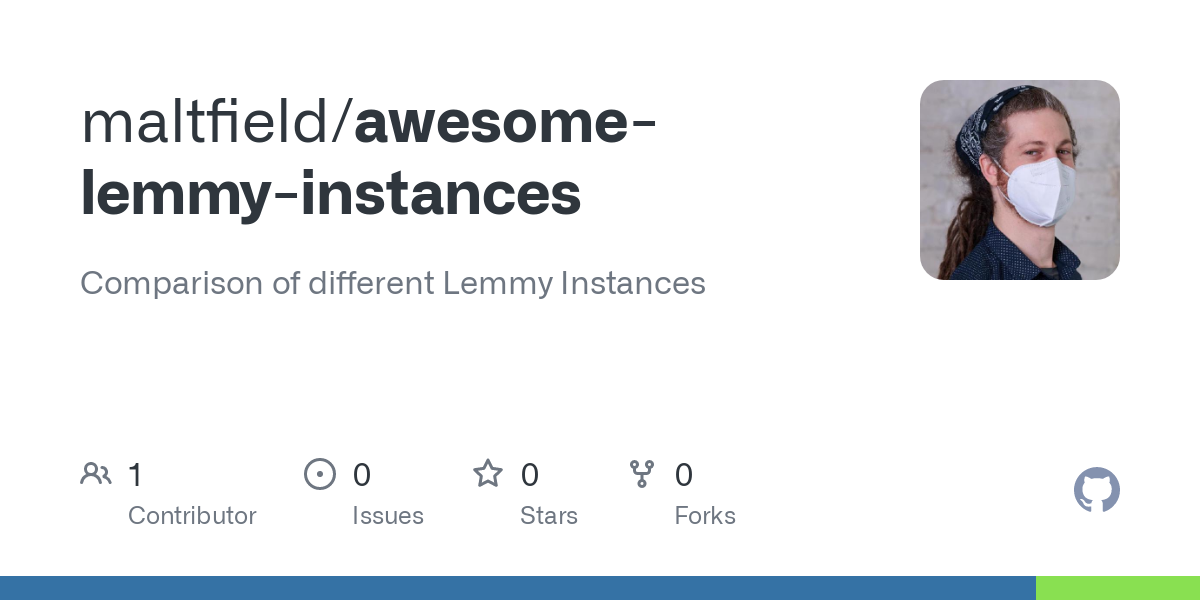- cross-posted to:
- lemmy@lemmy.ml
- sdfpubnix@lemmy.sdf.org
- cross-posted to:
- lemmy@lemmy.ml
- sdfpubnix@lemmy.sdf.org
I created a repo on GitHub that has a table comparing all the known lemmy instances
Why?
When I joined lemmy, I had to join a few different instances before I realized that:
- Some instances didn’t allow you to create new communities
- Some instances were setup with an
allowlistso that you couldn’t subscribe/participate with communities on (most) other instances - Some instances disabled important features like downvotes
- Some instances have profanity filters or don’t allow NSFW content
I couldn’t find an easy way to see how each instance was configured, so I used lemmy-stats-crawler and GitHub actions to discover all the Lemmy Instances, query their API, and dump the information into a data table for quick at-a-glance comparison.
I hope this helps others with a smooth migration to lemmy. Enjoy :)



Removed by mod
Only wish we knew what the definition of “active” being used was more clearly.
the lemmy source code is public
I mean in this git. “Active” is at the entire discretion of the person that made this list and is not quite fully defined.
AFAIK they are using the same metric as the lemmy crawler, which just calls the site API endpoint and grabs the users/month number which is visible in the sidebar. And the code for that is public